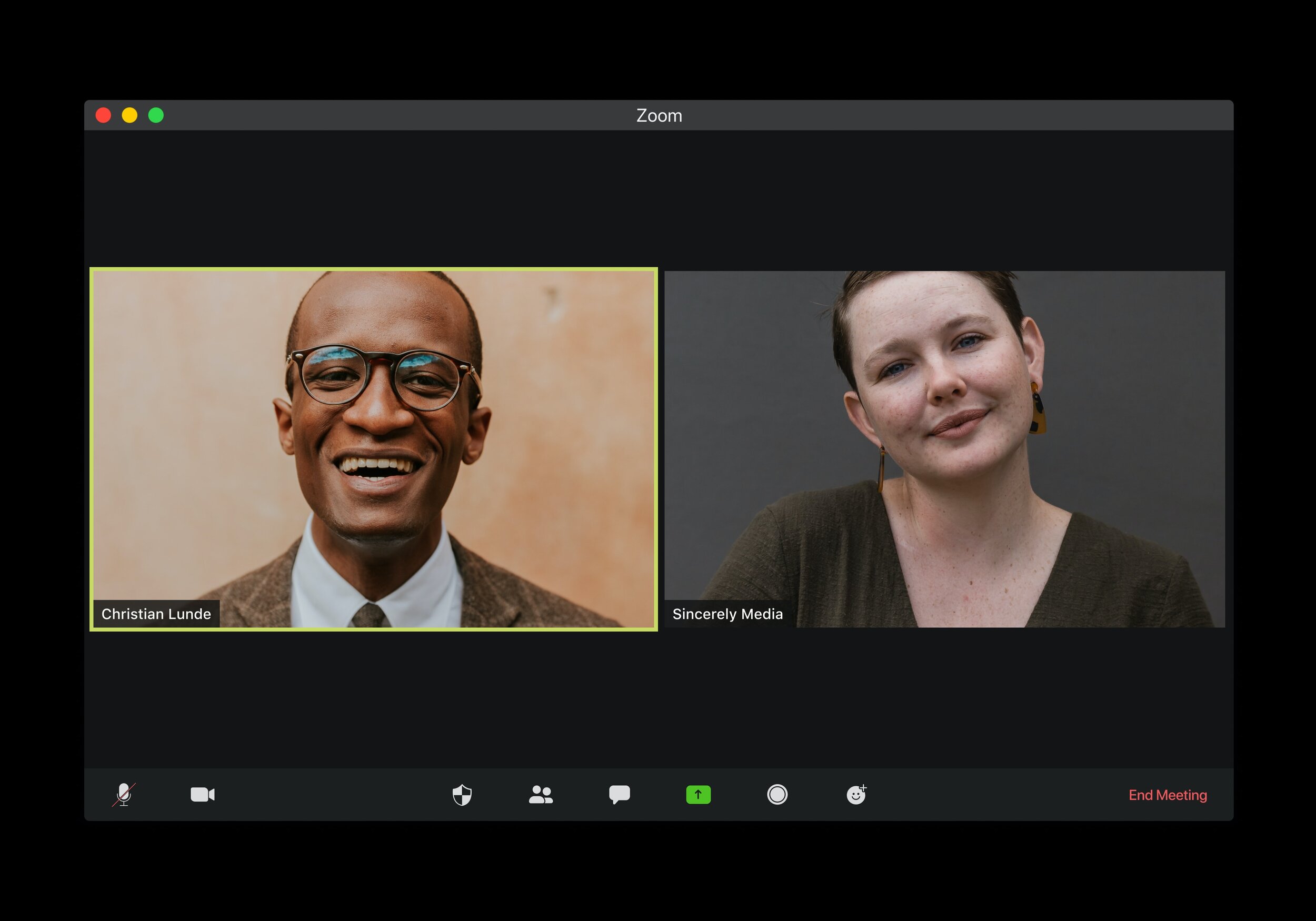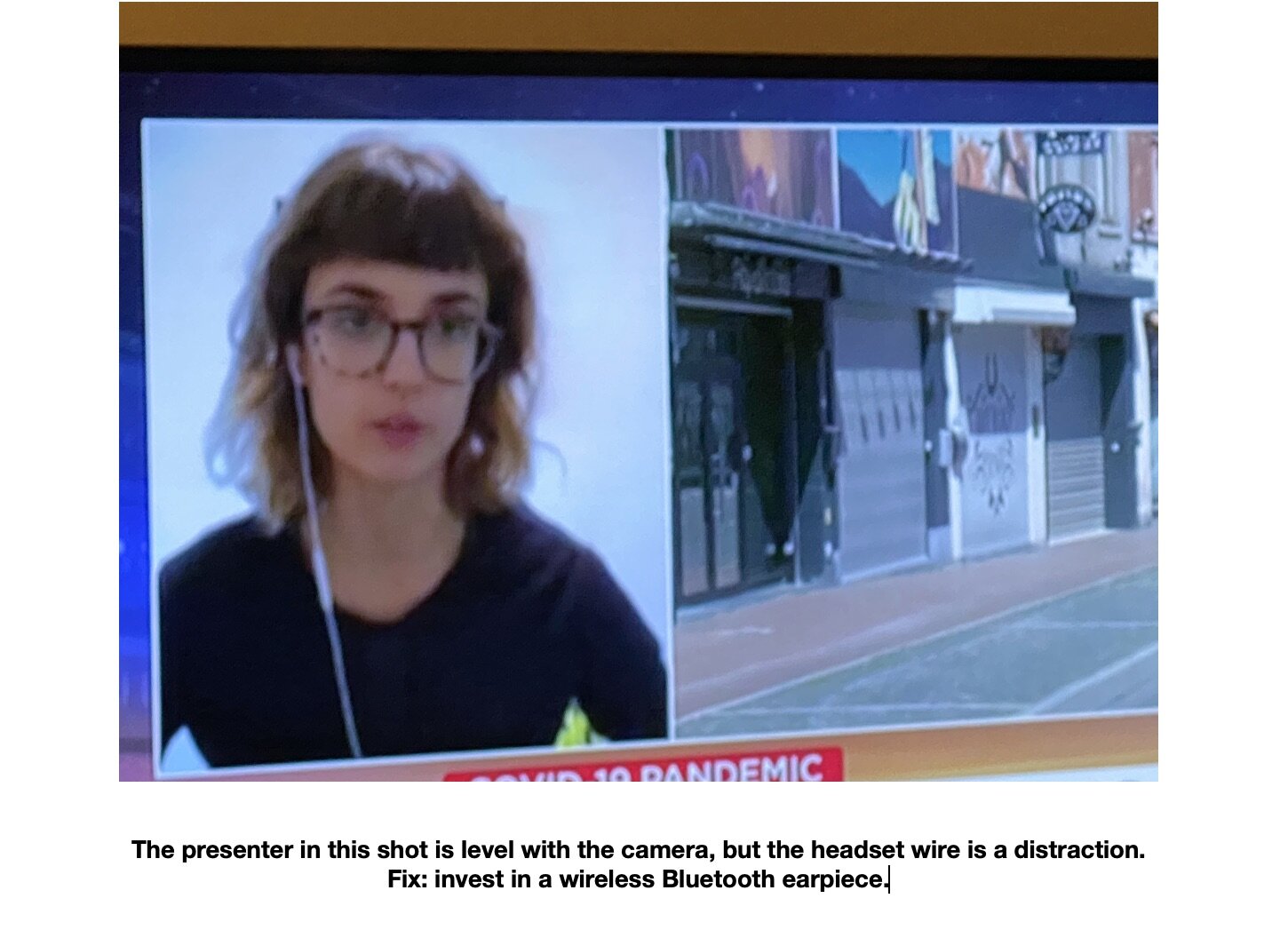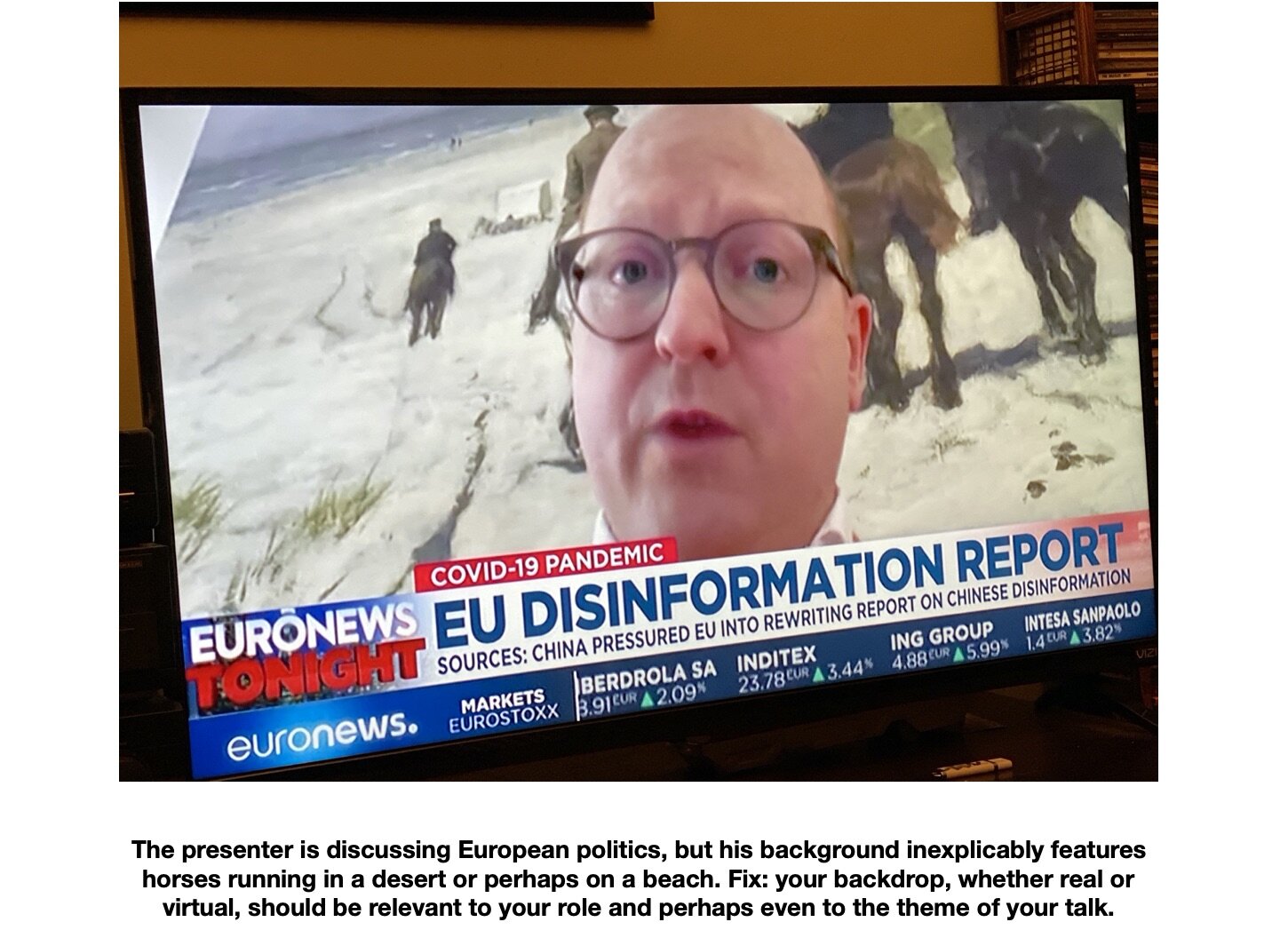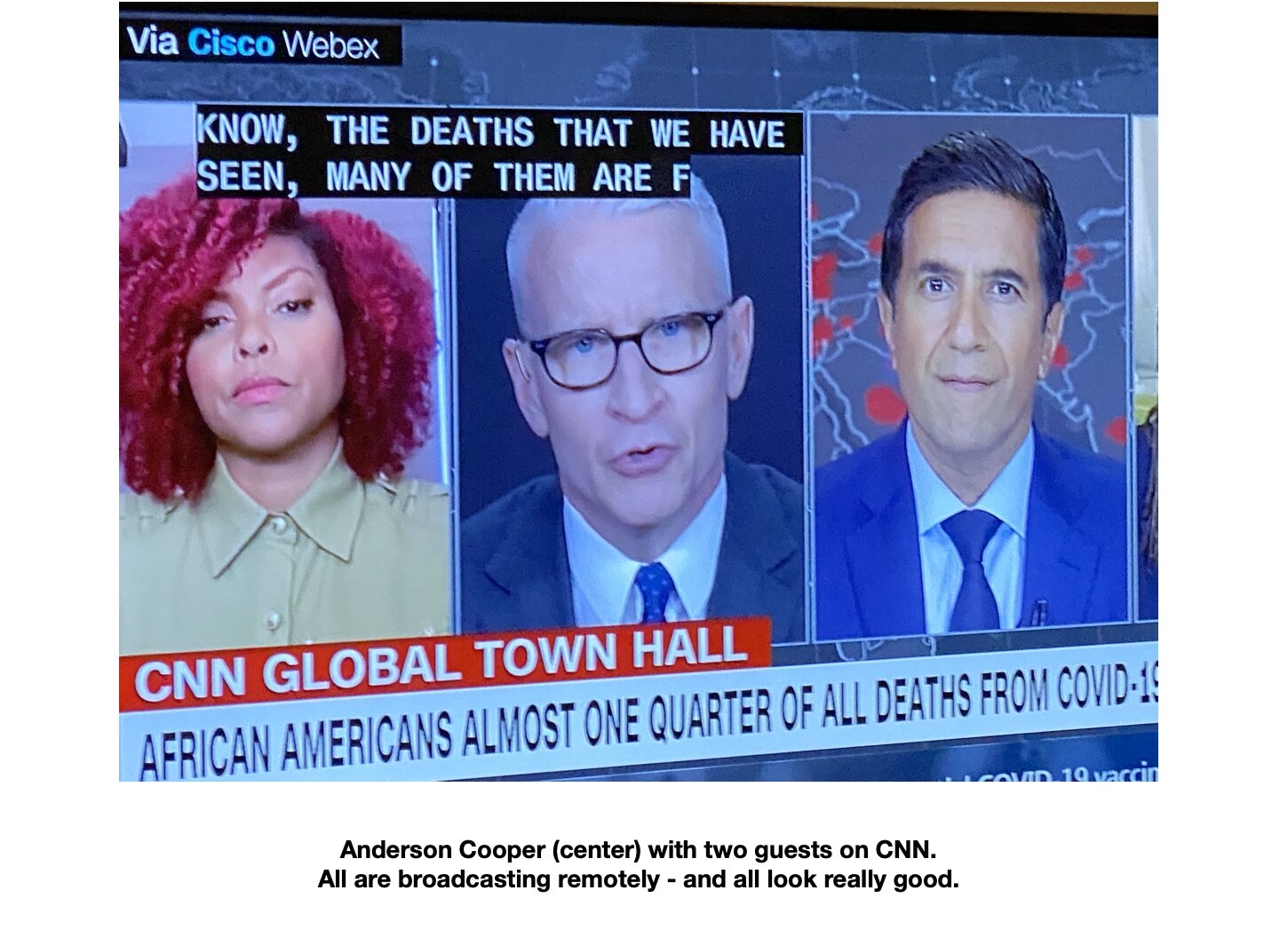Media commentary by Steve Dunlop
Listen to podcast version here
On the now-long-defunct New York radio station WPIX-FM, I once heard a popular disc jockey in a revealing moment of on-air candor. He was describing what it’s like to play hit records and spit out one-line gags to millions of listeners he could not see. “This job,” he announced, “is the closest thing you can imagine to getting paid to giggle in a closet.”
As the COVID-19 pandemic drags on, nobody’s giggling - but a lot of us can relate to that closet. Executives and managers across the business spectrum used to projecting authority and leadership in a boardroom have had to figure out how to do that from their basement. Or their dining room table. When the only entities physically present aren’t their employees - but their kids doing homework. Or their cat on the scratching post. Or their spouse - who actually might be conducting a Zoom meeting all their own from the den. It all taxes far more than just your household bandwidth.
And when companies like Facebook say they will encourage a large portion of their staff to work from home - not just until a COVID vaccine is available, but permanently - you know that even as we reopen, none of this is likely to change.
Which means relating to the camera - something only TV presenters used to worry about - is now becoming one of the most important business skills of the COVID era.
Since the onset of the pandemic, all our media trainings, presentation trainings, and crisis workshops have been offered virtually. We’ve culled many takeaways from this work, but there are four big ones so far. If you do nothing else to up your game, do these:
1. GET STARTED EARLY. If you’re the organizer, start your remote meeting at least 5 minutes before the scheduled time. Raise your computer to eye level so you are not condescendingly looking down at your audience. Use a stand, or set it on books if you have to. Lowering your office chair can help achieve the same effect. And whether you’re the organizer or a participant, make sure your audio and video are both working before you enter the meeting. Don’t waste your colleagues’ valuable time by searching for the unmute button on your microphone.
2. LET THERE BE LIGHT. Diffused natural light is best. For a daytime meeting, if you are fortunate enough to have a large window in your office, face it directly, and have that function as your key light. Eliminate the light sources in back of you - they cast shadows and make it more difficult for your audience to see you. When there’s no window, don’t set up a light to hit you directly in the face. Try moving it, shading it, or bouncing it off a wall to mimic the indirect effect of daylight.
3. CHOOSE YOUR BACKDROP CAREFULLY. You want people to focus on you - not the visual distractions in back of you. I learned this long before COVID. In the 1980’s I did a daily newscast from the New Jersey bureau of Fox 5 New York - then known as WNEW-TV. My background was a live shot out our window, overlooking the New Jersey Turnpike. What most people remember about my newscast isn’t what I said - but the cars and trucks that looked like they were going in one side of my head and out the other. I was ribbed about it constantly.
Some video platforms allow you to choose a virtual background, but be careful. These digital tricks can sometimes backfire, shaving your head and cropping your ears - cheapening your short with an ill-defined outline, making you look like you’re calling in from another planet.
4. LOOK AT ME. When you are speaking - and especially when you’re not screen sharing - keep your eyes focused squarely on the pinhole camera on your laptop. The temptation is strong to look at the rest of your screen, but remember - that’s what your audience will see: you looking at your screen, and not at them. Yes, you should also keep your audience in view. One trick is to drag the window of your video platform upwards on your screen, as close to the camera as you can - making it possible to split the difference.
A number of years ago I worked with a senior executive who abhorred the idea of appearing on camera. I remember him walking in before our first practice session and proclaiming, “Time for my root canal.” That sort of attitude might have been understandable in the rotary phone age, but it will not cut it in the era of WebEx, Skype, and Zoom. And even when society fully reopens and full scale face to face meetings resume… the on-camera era is here to stay.
To learn more about our services addressing this urgent need, click here.
Listen to the podcast of this Press Center Commentary here.








